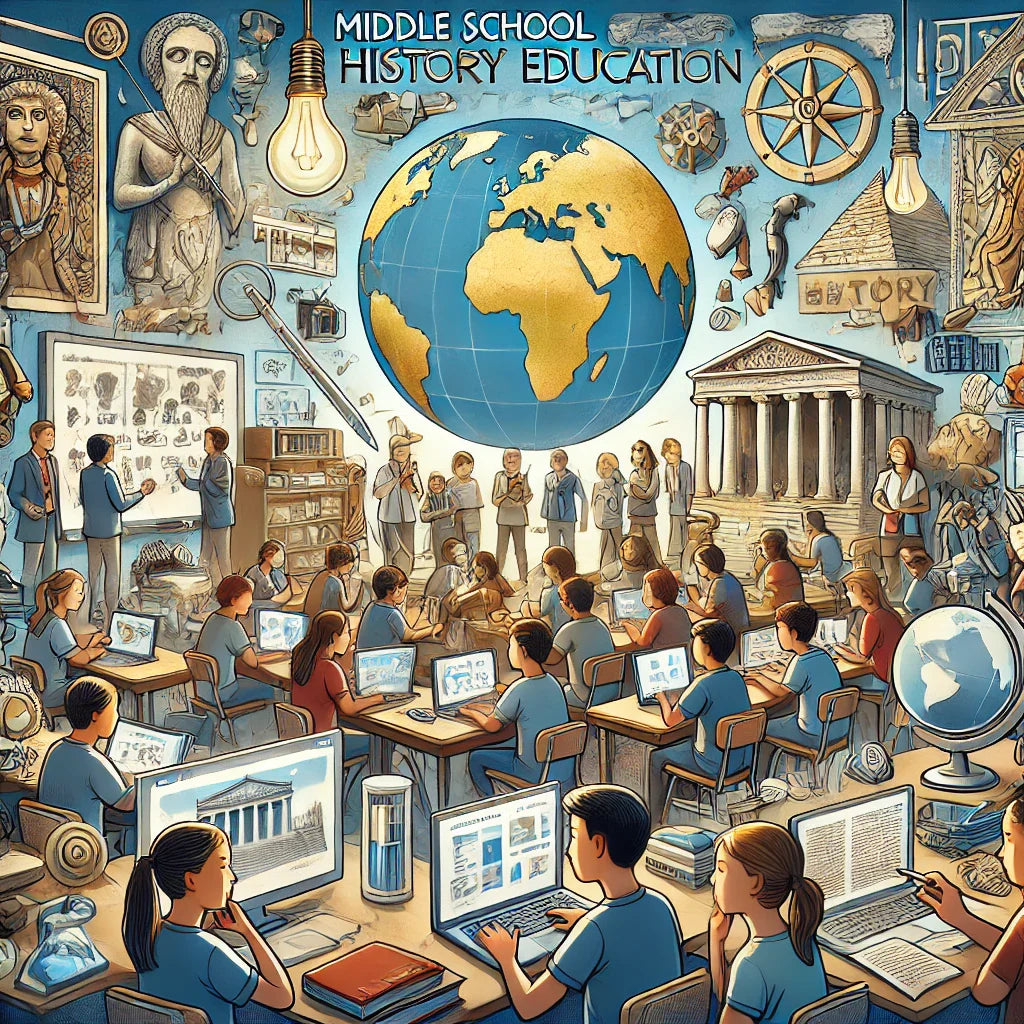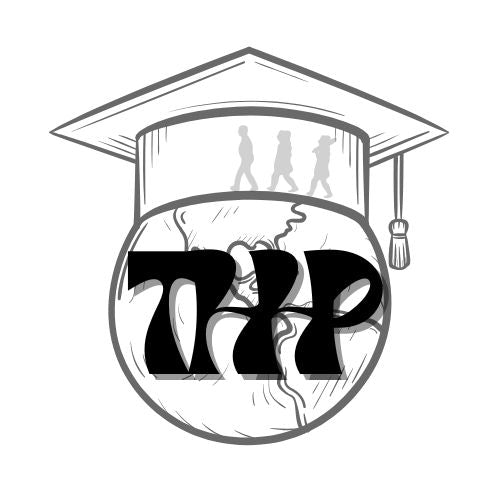
The Vital Role of Middle School History in Shaping Globally Aware Citizens
Share
History education at the middle school level offers more than just an understanding of past events—it lays the groundwork for developing globally aware citizens, critical thinkers, and adaptable individuals. As history teachers, we have the unique responsibility and opportunity to guide students toward understanding how humanity has shaped the world they live in today. By teaching them about historical events, cultures, and patterns, we provide them with the tools they need to connect the past with current global issues, preparing them for a future where critical thinking and adaptability are essential.
Understanding the Present Through the Lens of the Past
One of the most important benefits of history education is its ability to help students understand how human decisions, actions, and movements have shaped the present. Middle school is a critical time for students to begin connecting historical events to contemporary issues. For example, understanding the causes and outcomes of major historical events like the World Wars, the Civil Rights Movement, or the spread of the Industrial Revolution enables students to see how patterns of conflict, inequality, and technological advancements continue to influence modern society. According to Wineburg and Martin (2009), history education helps students develop the ability to "read the past" in ways that allow them to engage meaningfully with the present. This not only enhances their academic performance but also prepares them to make informed decisions as active citizens in an increasingly complex world.
Through history lessons, students can also develop a sense of global awareness. Learning about diverse cultures and civilizations—such as ancient Egypt, Greece, China, and the indigenous cultures of the Americas—helps students appreciate the interconnectedness of humanity. They learn that the events of one region often have ripple effects around the world, a crucial lesson in today’s globally connected society. For instance, understanding how trade routes like the Silk Road facilitated the exchange of goods, ideas, and diseases allows students to better grasp the complexities of global trade and international relations in the 21st century.
Developing 21st-Century Skills in the History Classroom
As we move further into the 21st century, the skills needed to succeed in an ever-changing world have shifted. In addition to historical knowledge, students must develop critical thinking, communication, collaboration, and problem-solving skills. This is where history classes become essential in building the 21st-century skills that students need to thrive in the workforce and society.
Middle school history classes, with their focus on analyzing primary sources, examining historical arguments, and debating the consequences of past actions, provide the perfect platform for developing these skills. As students explore historical events from multiple perspectives, they learn to evaluate evidence, construct well-reasoned arguments, and communicate their ideas effectively. These activities foster a range of skills—such as critical thinking and problem-solving—that are vital in today’s world, where rapid technological advancements and social change require constant adaptation.
Moreover, history education teaches students how to collaborate and work in diverse teams. When studying global history, students often work together to analyze the actions of different civilizations or assess the impact of key historical figures. These group activities not only build teamwork but also help students recognize the value of diverse perspectives. As the world becomes more interconnected, the ability to work with people from different backgrounds and viewpoints is crucial.
The Role of Technology in History Education
In today’s digital age, incorporating technology into history lessons can further enhance students’ understanding and engagement. Interactive timelines, virtual museum tours, and online discussions provide opportunities for students to explore history in ways that were previously impossible. Technology also offers a wealth of primary source material, such as digitized letters, photographs, and newspapers, which can deepen students’ understanding of historical events. As Capps and Crawford (2013) note, integrating digital tools into history education allows students to interact with the past in dynamic ways, fostering both historical empathy and analytical skills.
Furthermore, technology facilitates the development of research and communication skills that are integral to 21st-century success. By conducting independent research online, students not only gain a deeper understanding of historical events but also learn how to evaluate sources for credibility, a critical skill in today’s information-saturated world. Encouraging students to create digital presentations or write blogs about historical topics allows them to communicate their findings in innovative ways, preparing them for future careers where digital literacy is essential.
Preparing Students for a Constantly Changing Future
As we prepare our students for the future, we must remember that the world they will inherit will be vastly different from the one we know today. By teaching history in a way that encourages global awareness, critical thinking, and the development of 21st-century skills, we equip them to navigate the complexities of an increasingly interconnected and fast-paced world. They will not only be prepared to understand the forces that shaped our present but also to contribute meaningfully to shaping the future.
Incorporating skill-building into history education does not mean sacrificing content; rather, it means teaching students how to think critically about the past, present, and future. History education, when done well, fosters a sense of agency, empathy, and responsibility. It reminds students that they are not merely products of their time, but active participants in shaping the world for generations to come.
References
Capps, R., & Crawford, A. (2013). Digital history: A guide to gathering, preserving, and presenting the past on the web. Wiley-Blackwell.
Wineburg, S., & Martin, D. (2009). Reading like a historian: A methodology for teaching and learning history. The Journal of American History, 95(2), 463-474. https://doi.org/10.2307/40465647
